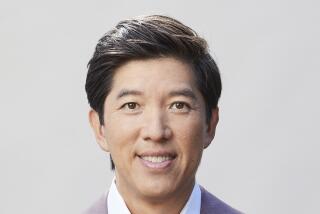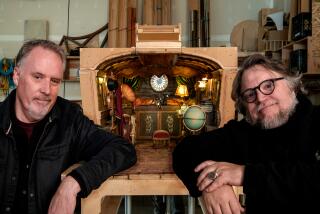On Location: How Weta Digital helped ‘Furious 7’ say goodbye to Paul Walker in ‘the best way’
As senior visual effects supervisor at Weta Digital, Joe Letteri has created everything from digital stunt doubles to fantasy creatures in “Lord of the Rings,” “Avatar” and countless other films. But “Furious 7” challenged him in a new way.
When star Paul Walker died in an off-set car crash halfway through filming the seventh installment of the “Fast and Furious” action franchise, the studio called in Letteri, his colleague Martin Hill and a team of more than 300 visual effects artists.
SIGN UP for the free Indie Focus movies newsletter >>
“We started laying the groundwork for what we would need to do to complete Paul’s performance and to help them finish the film,” said Letteri.
As a result, Walker’s character, Brian O’Connor, rides again with the “Furious” crew, battling assassins, hostage-takers and drones in Azerbaijan, Abu Dhabi and Los Angeles — before bidding his friends farewell.

Watch the trailer for “Furious 7.”
What was your starting point?
We didn’t have anything to go on: We weren’t able to scan Paul; we couldn’t ask him how he would perform this scene or get him to do a little bit of motion capture for us. So we started off with John Brotherton as an actor who really studied Paul, and he was in there to try to help us understand physically what Paul would be doing in any given performance and for the other actors to work with. And we found that it was really helpful to have Paul’s brothers, Caleb and Cody, on set, because their mannerisms and their look were so much more like Paul’s. We filmed from multiple cameras from different angles, and our animators could look at that and use that to reconstruct the motion. And a lot of times, we were able to keep the physical performance of what they did with their bodies, because it was so close to what Paul would have done, and we would just replace the head and the facial performance.
How did you do that?
We started just trying to get the form right, so what we did is we looked at whatever reference we could find of Paul from the films. We also scanned both his brothers, Caleb and Cody, and John Brotherton, so we had people who are similar build and style to work with. And then we would start to essentially remold those models into how Paul looked while he was shooting the last film, “Furious 7.” Then we did skin scanning of, again, his brothers, because they had very similar skin quality to Paul. So we used that as a starting point to try to get everything in the right place — the skin coloration and wrinkles and things like that. And then we used [Caleb, Cody and John] as a guide to how a face similar to Paul’s might work in motion and then, looking at Paul’s form, translated that to his face.
Which details make a difference?
The believability of the eyes is important — getting the small movements of the eyes, the refraction, the wetness, the color and the lighting, any physical dynamics from the character moving around or wind blowing in the hair. All of those things have to come together to give you a sense of a believable, whole performance.
What were the challenges?
The really big challenge was the dialogue. You have this network of muscles under the face that are constantly in motion, giving you subtle cues about our expressions. But also the way the lips, the jaw, the cheeks are all moving to create sounds — just the simple act of creating consonants and vowels involves a lot of complex muscle motions, and these motions are very fluid from frame to frame. It’s very easy for it to fall into a puppet-like look, where things look like they’re stretching. And contrary to what people think, the face doesn’t stretch.
Which scenes are you proud of?
It’s actually some of the more subtle acting scenes. There’s a scene of him in the car with the Kurt Russell character that’s just a lot of reaction and facial performance that’s really nice. You really know when you can feel the emotion in a close-up scene that things are working.
What did this project mean to you?
It was actually quite an honor to be asked to do this, because it was very tragic what happened, and we were all pretty reluctant to even think about how far you could go with it, because he was such a loved character. And it really only started to make sense when we looked at the film and realized, “Well, if you really want to honor what Paul has done, that story needs to be finished. You need to say goodbye in the best way that you can.” And that’s what we tried to bring to the film.
Follow The Times’ complete coverage of the Golden Globes and Oscars.
MORE FROM ENTERTAINMENT
Carrie Fisher thinks slave Leia bikini haters are asinine
Netflix’s ‘Fuller House’ gets both release date and creepy trailer
‘Hateful Eight’s’ Quentin Tarantino, Samuel L. Jackson touch raw nerve of racism
More to Read
From the Oscars to the Emmys.
Get the Envelope newsletter for exclusive awards season coverage, behind-the-scenes stories from the Envelope podcast and columnist Glenn Whipp’s must-read analysis.
You may occasionally receive promotional content from the Los Angeles Times.






